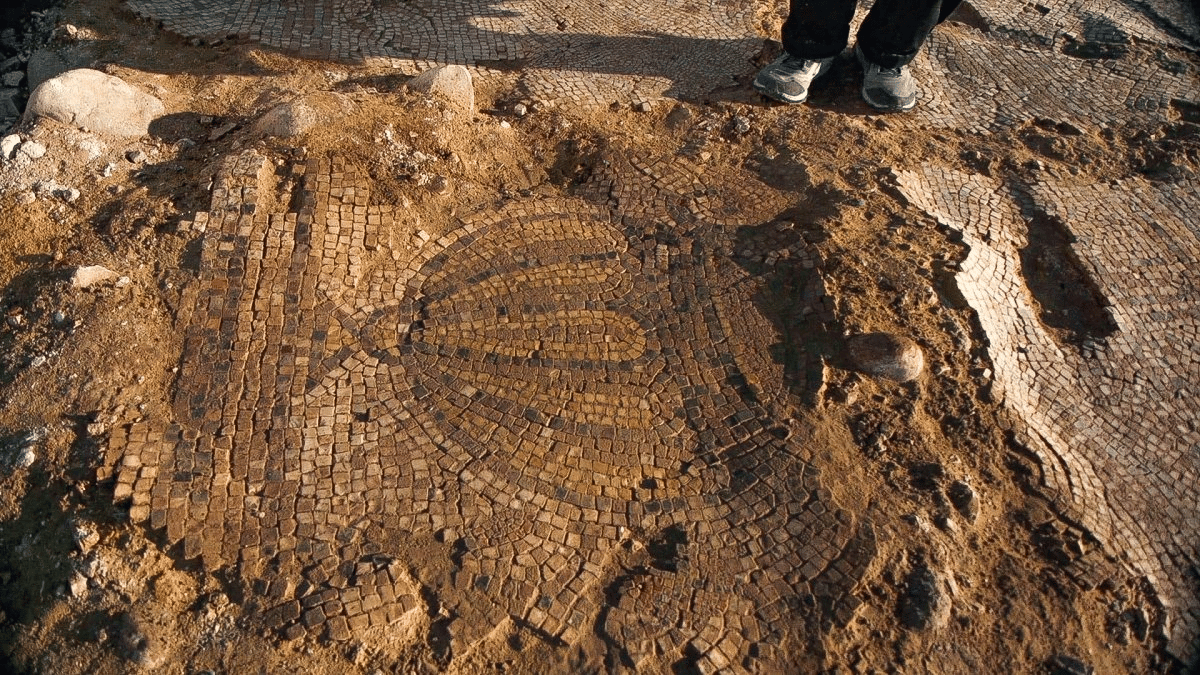A window to the past
1,500-year-old gem unearthed in Kiryat Gat: A mosaic masterpiece
Archaeologists discover stunning mosaic floor with Greek blessing and sophisticated wine press in ancient settlement.

An impressive 1,500-year-old structure was recently uncovered north of Kiryat Gat, whose treasures include a colorful mosaic floor with a Greek inscription and a sophisticated winepress.
The discovery was due to an excavation by the Israel Antiquities Authority as part of the development work of the Israel Land Authority for the construction of the Northern Gat Vineyards in the north of the city. "This is the largest and most significant site uncovered in the area from the Roman-Byzantine periods," the researchers say.
"Blessed are you when you come in, and blessed are you when you go out" (Deuteronomy 28:6). This is what was written on the colorful floor of the building, which is about 1500 years old. The excavation uncovered the remains of at least ten buildings, dating to the Byzantine period (5th-6th centuries CE) and part of an ancient site that existed in the Roman period for about 600 years.
The finds uncovered in and around the building include a large quantity of imported vessels, coins, marble items, glass and metal vessels, which attest to a rich and significant settlement.
The mosaic floor of the building incorporated lions, pigeons, amphorae, flowers and geometric patterns. In the center of the mosaic is the inscription in Ancient Greek – "Blessed are you when you come and blessed are you when you go out" (Deuteronomy 28:6). In the geometric patterns in the mosaic, very small tesserae were incorporated.
In addition to this building, a sophisticated winepress was also exposed, which was built and repaired several times. The mosaic paving the fermentation chambers and the collecting vat incorporated white and blue stones. On top of the plaster of the collecting vats, remnants of red paint can be seen.
The floor of the northern collecting vat was built of slabs, some of which were marked with Greek letters, which served as signs for the winepress's builders. All of these attest to the fact that a great deal of time, money and effort were invested in the construction and development of this winepress.
According to Shira Lifshitz and Maayan Margulis, excavation directors on behalf of the Israel Antiquities Authority, "The ancient settlement is located on a central road connecting the mountain to the coastal plain, and apparently served the smaller settlements in the area, as well as the passers-by who passed through it. This is the largest and most significant site uncovered in the area from the Roman-Byzantine periods.
* Bihadrei Haredim contributed to this article.